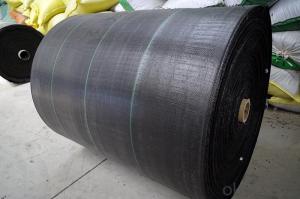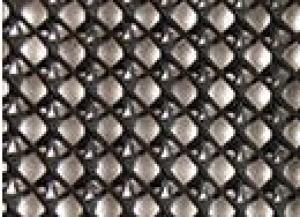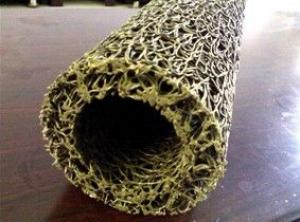Weed Control Fabric for Green Plants Stab Resistant
- Loading Port:
- Qingdao
- Payment Terms:
- TT or LC
- Min Order Qty:
- 5000 m²
- Supply Capability:
- 100000 m²/month
OKorder Service Pledge
OKorder Financial Service
You Might Also Like
Weed Control Fabric for Green Plants Stab Resistant
Description Of Weed Control Fabric for Green Plants Stab Resistant
This Weed Control Fabric consists of two layers of geotextiles, (one is Needle-punching Non-woven, the other is PP woven) composited by heating bonding or needle-punch process.
Main Features of Weed Control Fabric for Green Plants Stab Resistant
1. Weed eliminating
2. Strong UV-proofing
3. Humidity-maintaining, to provide soil with expected fertilizer and air
4. Extraordinary penetration of water and air
5. Excellent tenacity and strength
6. Durable, mildew resistance and corrosiveness resisting
7. Light weight to facilitate installation and to follow natural ground profile
8. Suitable for landscape, board and pavement
9. High quality, low price and fashionable design
10. Long service life
Applications of Weed Control Fabric for Green Plants Stab Resistant
1. UV-Resistance
2. Good penetration of water and air
3. This environment-friendly Weed Control Fabric eliminates the use of herbicide
4. Composition of Woven Fabric and Non-woven seems both fashionable and economically durable.
IMages of Weed Control Fabric for Green Plants Stab Resistant






FAQ:
1. What are we supplying?
We are specialized in producing .geotextile , geocell, geogrid, geomembrane
2. How Many years experience do we have?
We have been exported to more than 15 countries in the past 10 years.
3. How long do we usually reply your request?
We always reply our customer within 12 hours.
- Q: Can earthwork products be used for slope stabilization in earthquake-prone areas?
- Yes, earthwork products can be used for slope stabilization in earthquake-prone areas. These products, such as geotextiles, geogrids, and retaining walls, are designed to enhance the stability of slopes and prevent soil erosion. They can withstand the dynamic forces generated during earthquakes and provide additional support to the slopes, minimizing the risk of landslides or slope failures. However, it is essential to consider the specific geological conditions and engineering requirements of each location to ensure the effectiveness and appropriateness of the earthwork products for slope stabilization in earthquake-prone areas.
- Q: Can geosynthetics be used for lining hydraulic fracking ponds?
- Yes, geosynthetics can be used for lining hydraulic fracking ponds. These materials, such as geomembranes, provide an impermeable barrier that helps contain fluids and prevent contamination of surrounding soil and water sources. Additionally, geosynthetics offer durability, flexibility, and compatibility with various chemicals used in fracking operations, making them suitable for lining these ponds.
- Q: How are geosynthetic clay liners used in landfill lining?
- Geosynthetic clay liners are used in landfill lining to provide a barrier against the migration of liquids and gases. They consist of layers of geotextile fabric and bentonite clay, which swells upon contact with water to form a low-permeability barrier. These liners are placed between layers of soil and waste materials to prevent the leakage of contaminants into the surrounding environment, ensuring the long-term integrity and safety of the landfill.
- Q: Can geotextile tubes be used for dewatering?
- Yes, geotextile tubes can be used for dewatering. They are commonly used in various industries and construction projects to remove water from sediment or sludge by allowing the water to drain through the porous fabric while retaining the solid particles inside the tube.
- Q: Can geosynthetics be used for lining wastewater treatment plants?
- Yes, geosynthetics can be used for lining wastewater treatment plants. Geosynthetics, such as geomembranes and geotextiles, are commonly used to provide impermeable barriers and enhance the performance of lining systems in wastewater treatment facilities. They help to prevent leakage, control seepage, and protect the surrounding environment from potential contamination. Additionally, geosynthetics offer durability, flexibility, and cost-effectiveness, making them a suitable choice for lining wastewater treatment plants.
- Q: How are geosynthetic clay liners installed in landfill projects?
- Geosynthetic clay liners (GCLs) are typically installed in landfill projects by following a specific process. First, the landfill subgrade is prepared by removing any loose or unstable materials and ensuring proper compaction. Next, a geotextile fabric is placed on the subgrade to protect the GCL from damage. The GCL rolls are then carefully unrolled and overlapped, with the edges and ends properly sealed using a bentonite-based adhesive or sodium bentonite powder. The GCL is then covered with another layer of geotextile fabric to protect it during subsequent construction activities. Overall, the installation of GCLs in landfill projects requires precise handling and attention to detail to ensure their effectiveness in preventing contaminant leakage.
- Q: Can earthwork products be used for aesthetic purposes?
- Yes, earthwork products can be used for aesthetic purposes. They can be shaped, molded, and arranged in various ways to create visually appealing landscapes, such as decorative pathways, garden beds, terraces, and retaining walls. Additionally, earthwork materials like gravel, rocks, and boulders can enhance the overall aesthetics of outdoor spaces, providing natural and rustic elements that blend harmoniously with the environment.
- Q: Can earthwork products be used for retaining walls?
- Yes, earthwork products can be used for retaining walls. Earthwork products such as compacted soil, geotextiles, and geogrids can be utilized in the construction of retaining walls to provide stability, prevent erosion, and improve drainage. These materials are commonly used in various types of retaining wall systems, including gravity walls, reinforced soil walls, and gabion walls.
- Q: How do erosion control blankets help in earthwork applications?
- Erosion control blankets help in earthwork applications by providing a protective layer over the soil, preventing erosion caused by wind, rain, and other natural elements. These blankets are typically made of biodegradable materials such as straw or coconut fiber, which allow water and air to penetrate while holding the soil in place. They are easy to install and can be used on slopes, construction sites, and other areas prone to erosion, effectively minimizing soil loss and promoting vegetation growth.
- Q: How do geosynthetic liners prevent seepage in agricultural irrigation reservoirs?
- Geosynthetic liners prevent seepage in agricultural irrigation reservoirs by forming a impermeable barrier that inhibits water from penetrating or escaping the reservoir. These liners are made of synthetic materials with low permeability, such as geomembranes or geotextiles, and are installed underneath the reservoir to prevent water loss through seepage.
Send your message to us
Weed Control Fabric for Green Plants Stab Resistant
- Loading Port:
- Qingdao
- Payment Terms:
- TT or LC
- Min Order Qty:
- 5000 m²
- Supply Capability:
- 100000 m²/month
OKorder Service Pledge
OKorder Financial Service
Similar products
Hot products
Hot Searches
Related keywords

































